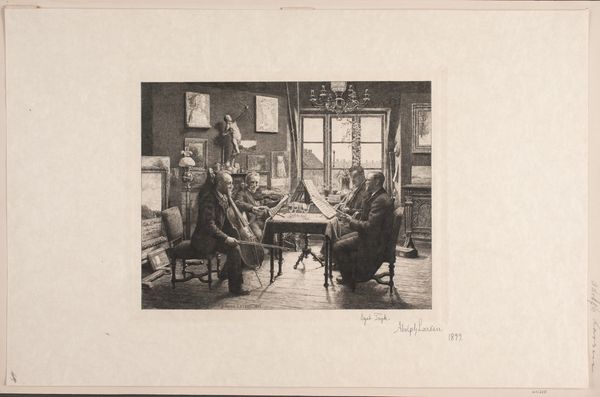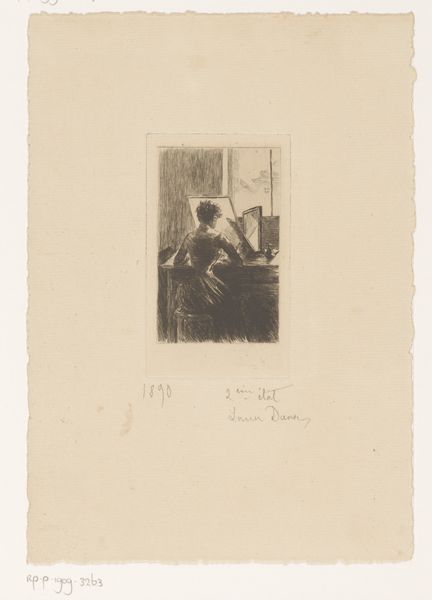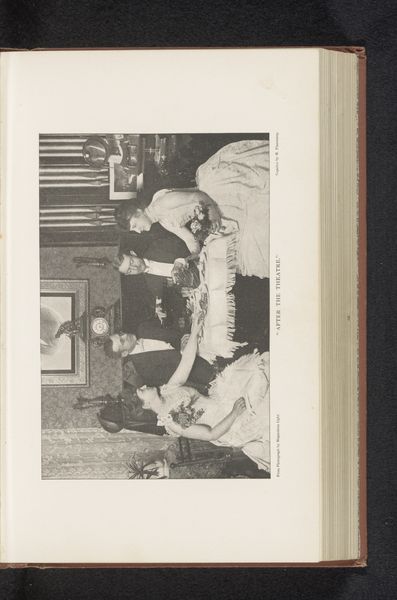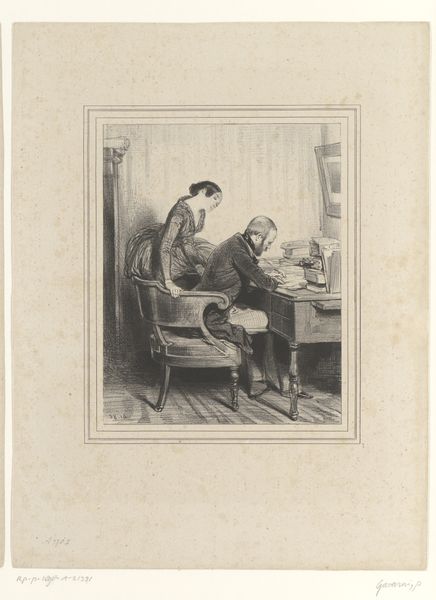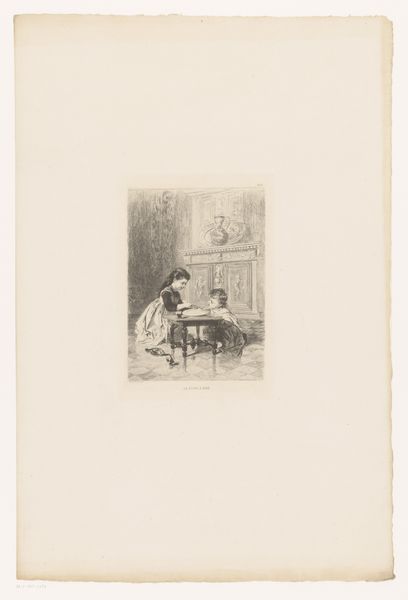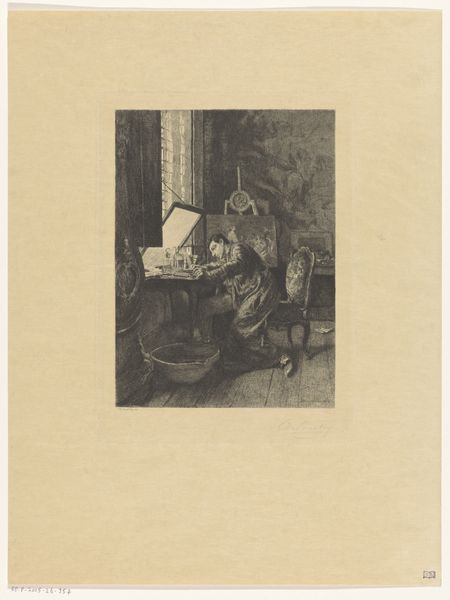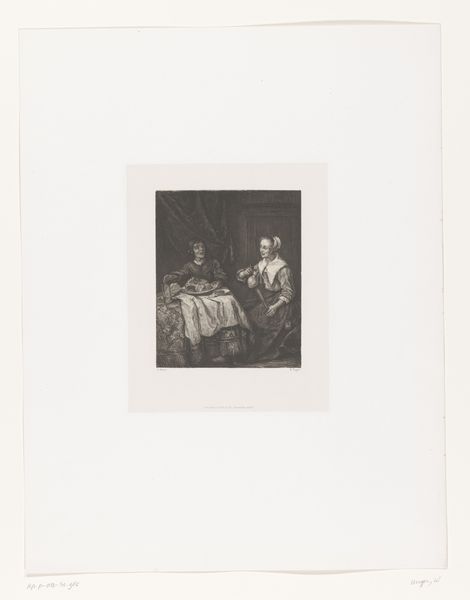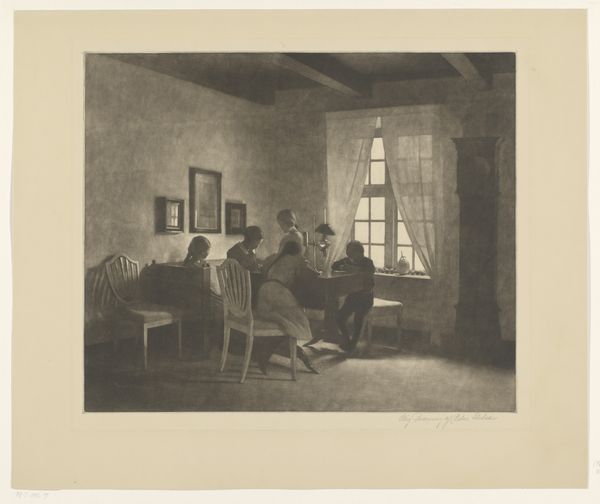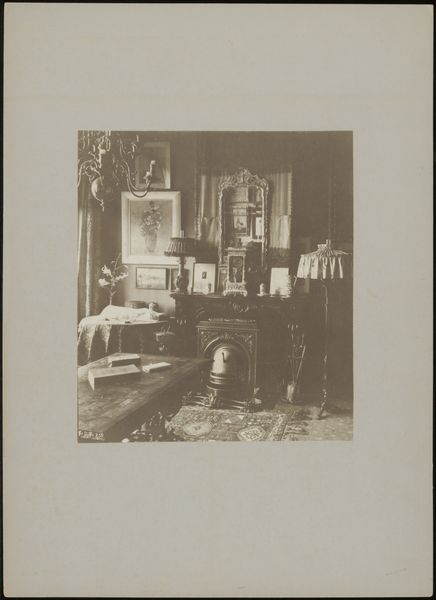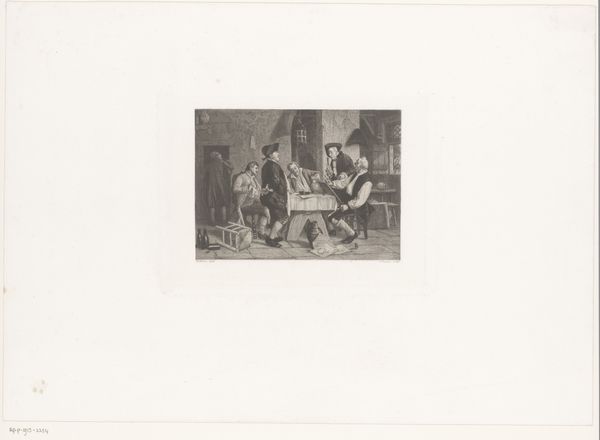
drawing, print, etching
#
drawing
#
narrative-art
# print
#
etching
#
genre-painting
#
history-painting
#
academic-art
Dimensions: 284 mm (height) x 230 mm (width) (plademaal)
Curator: Axel Helsted’s 1883 etching, "Two Sons at Their Mother's Deathbed," presents a deeply intimate scene rendered with academic precision. The medium itself, etching, allows for remarkable detail, especially notable given the narrative-art theme. Editor: My initial impression is one of solemnity and quiet grief, with a very careful use of chiaroscuro drawing the eye. The whole piece seems to hinge on the central, silent figures. The meticulous rendering feels both empathetic and detached. Curator: The choice of etching as a medium is significant; it enabled Helsted to create multiple prints, extending the accessibility of this poignant depiction of mourning to a broader audience, not just the wealthy. The availability of images and narratives like this served specific cultural functions. Editor: Absolutely, but from a formal perspective, consider the artist's arrangement of forms: the curve of the rug mirroring the curve of the sickbed. Note, too, how the patterned wallpaper closes in around the central group, adding to that sense of stifled emotion. Curator: Yes, the formal elements support the social narrative of constrained emotions dictated by Victorian social norms. Consider the material realities within the artwork itself. What textures did Helsted attempt to mimic via his etching process, and to what ends? For example, the texture of mourning clothes as compared with bed linen? Editor: It's an interesting point. The etching process, requiring acid and metal, adds a layer of industrial production to an intimate subject. And observe how the domestic space itself is delineated with such detail! I note that, overall, the tonal range and textures give volume and density to a scene that speaks of absence. Curator: Right! Consider also the social impact of depicting genre-painting scenes such as this; circulating the narrative to those experiencing or witnessing similar mortality circumstances could normalize dialogue around the event of death, or even provide templates for performing the relevant mourning rituals. Editor: Yes, in our increasingly sanitized and distanced culture, to engage directly with works like this one returns death and grieving to their rightful, visible place within society and within art. Curator: In its detailed observation and reproductive accessibility, this work offers a window into understanding death not merely as personal tragedy, but as a shared cultural and social experience shaped by material circumstances. Editor: Agreed. By carefully arranging form, tone, and detail, the artist crafted not merely a genre scene but an enduring meditation on loss and human connection.
Comments
No comments
Be the first to comment and join the conversation on the ultimate creative platform.
